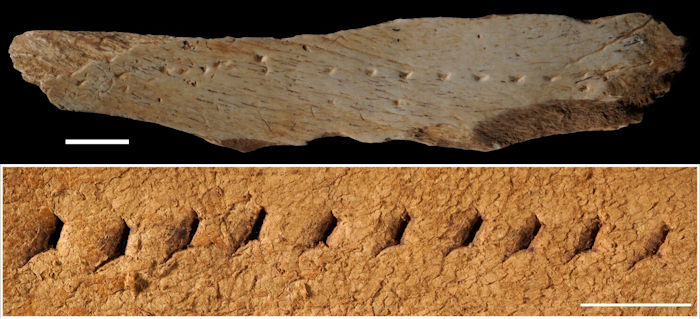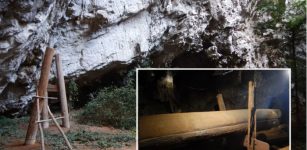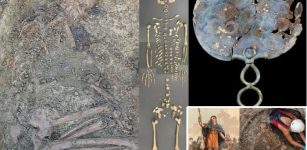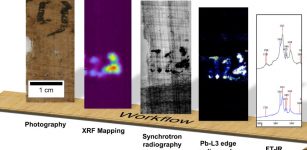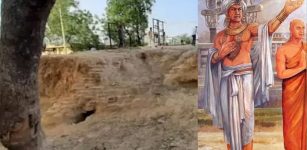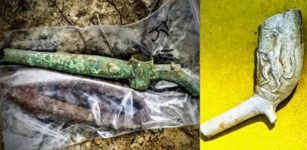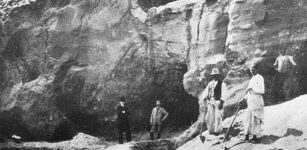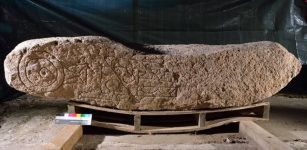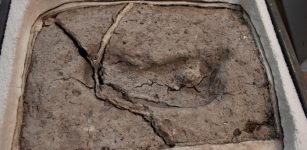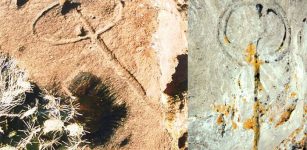Evidence Europeans Made Leather Clothing 40,000 Years Ago – New Study
Jan Bartek - AncientPages.com - Paleolithic people living in very cold environments depended on tight-fitting garments to survive. What tools and techniques were used to produce such clothing about 40,000 years ago has been unclear. According to a recent study, an ancient bone fragment offers evidence used to make leather clothing dating back to the Upper Paleolithic.
Credit: Adobe Stock - Gorodenkoff
A team of archaeologists and anthropologists from Université de Bordeaux, Institut Polytechnique de Bordeaux, and Universitat de Barcelona analyzed a bone fragment with marks that they suggest reveal new details about human history on the Iberian Peninsula. Researchers state they have discovered a leather punching board in Terrasses de la Riera dels Canyars de Gavà, in Barcelona, Spain
The ancient bone is a fragment of the pelvis of a large mammal, probably a horse or a bison, with 28 perforations in its flat part, dating back more than 39,000 years. The use of this tool would explain how our ancestors sewed thick leather clothing.
"Puncture alignments are found on Palaeolithic carvings, pendants, and other fully shaped osseous artifacts. These marks were interpreted as abstract decorations, system of notations, and features present on human and animal depictions," the researchers explain in their study.
A 39,600-year-old leather punch board from Canyars, Gavà, Spain. Credit: Francesco d'Errico and Luc Doyon
To learn more about the possibility ancient humans produced leather clothes, scientists created an experimental framework for the analysis and interpretation of human-made punctures. They applied it to a highly intriguing, punctured bone fragment found at Canyars, an Early Upper Palaeolithic coastal site from Catalonia, Spain. "Changes of tool and variation in the arrangement and orientation of punctures are consistent with the interpretation of this object as the earliest-known leatherwork punch board recording six episodes of hide pricking, one of which was to produce a linear seam. Our results indicate that Aurignacian hunters-gatherers used this technology to produce leather works and probably tailored clothes well before the introduction of bone eyed needles in Europe 15,000 years later," the study states.
Not being able to date the bone properly, scientists determined its age by examining the material around it. They believe it was from approximately 39,600 years ago, from the middle of the Upper Paleolithic.
"After the discovery of the intriguing object in Canyars, we carried out microscopic analyzes and designed an experimental protocol aimed at understanding what tools could produce these marks, as well as their most probable origin," Luc Doyon, a researcher at the Center National de la Recherche Scientifique ( CNRS ) of France explains.
Using the 39,600-year-old leather punching board, scientists verified that it was possible to make identical signals by perforating thick leather to make a line of dots necessary to manufacture waterproof leather objects.
About 40,000 years ago, the climate in Europe and the Iberian Peninsula was like the temperatures in modern Siberia. Scientists understood warm clothes were necessary, but how did our ancestors stitch clothing parts together when needles with eyes had not been invented? "The earliest bone eyed needles are found in Siberia and East Asia c. 40 to 35 ka B.P. but remain undocumented in Western Europe before the Solutrean," the study explains. Also, eyed needles are not required for the manufacture of fitted clothes and can even be ineffective for repeatedly piercing thick hides.
Four aspects of the Canyars leather punch board made from a fragment of a large mammal hip bone. Scale bar, 1 cm. Credit: Francesco d'Errico and Luc Doyon
Aurignacian hunter-gatherers overcame this problem by using the leather punching board.
"The invention of a pricking technique to easily and rapidly produce a large number of identical, equidistant, and aligned perforations may have facilitated the emergence of tailored clothes. The evidence from Canyars indicates that an effective pricking technique was well established in Southern Europe at the onset of the Upper Palaeolithic.
The extreme regularity observed in the production of Canyars set 2 demonstrates, by comparison with experimental puncture sets, that the artisan mastered the technique. This suggests that Aurignacian hunters-gatherers had and used the technology to produce tailored clothes even if their technical system did not involve the production of bone eyed needles.
Fitted clothing was certainly instrumental to adapting to the millennial-scale climatic variability that has characterized the European Early Upper Palaeolithic. Future research should focus on the diversity of artifacts on which anthropologically made punctures were found to understand how this technological innovation became adapted to different functions," the research team concludes.
The study was published in the journal Science Advances
Written by Jan Bartek - AncientPages.com Staff Writer


